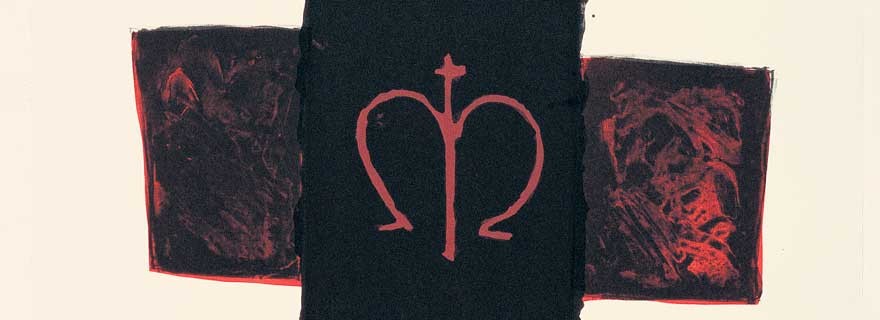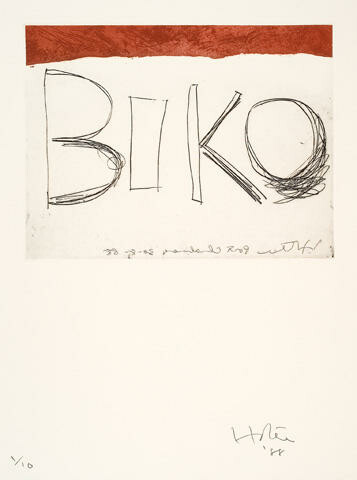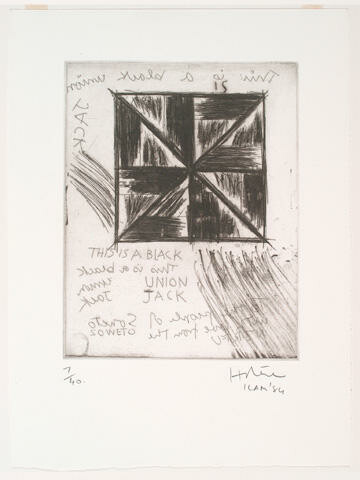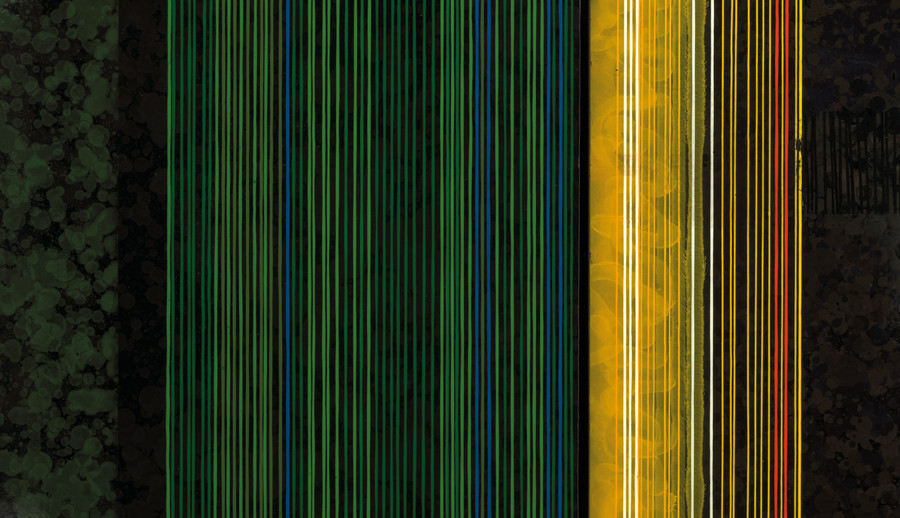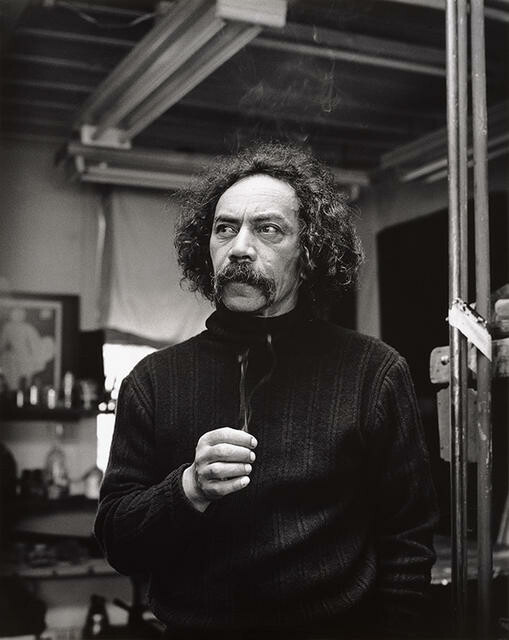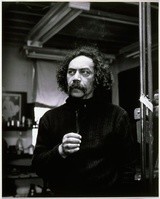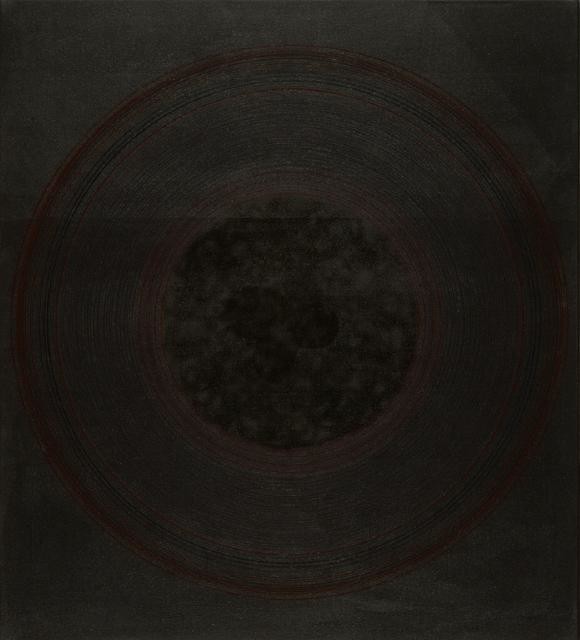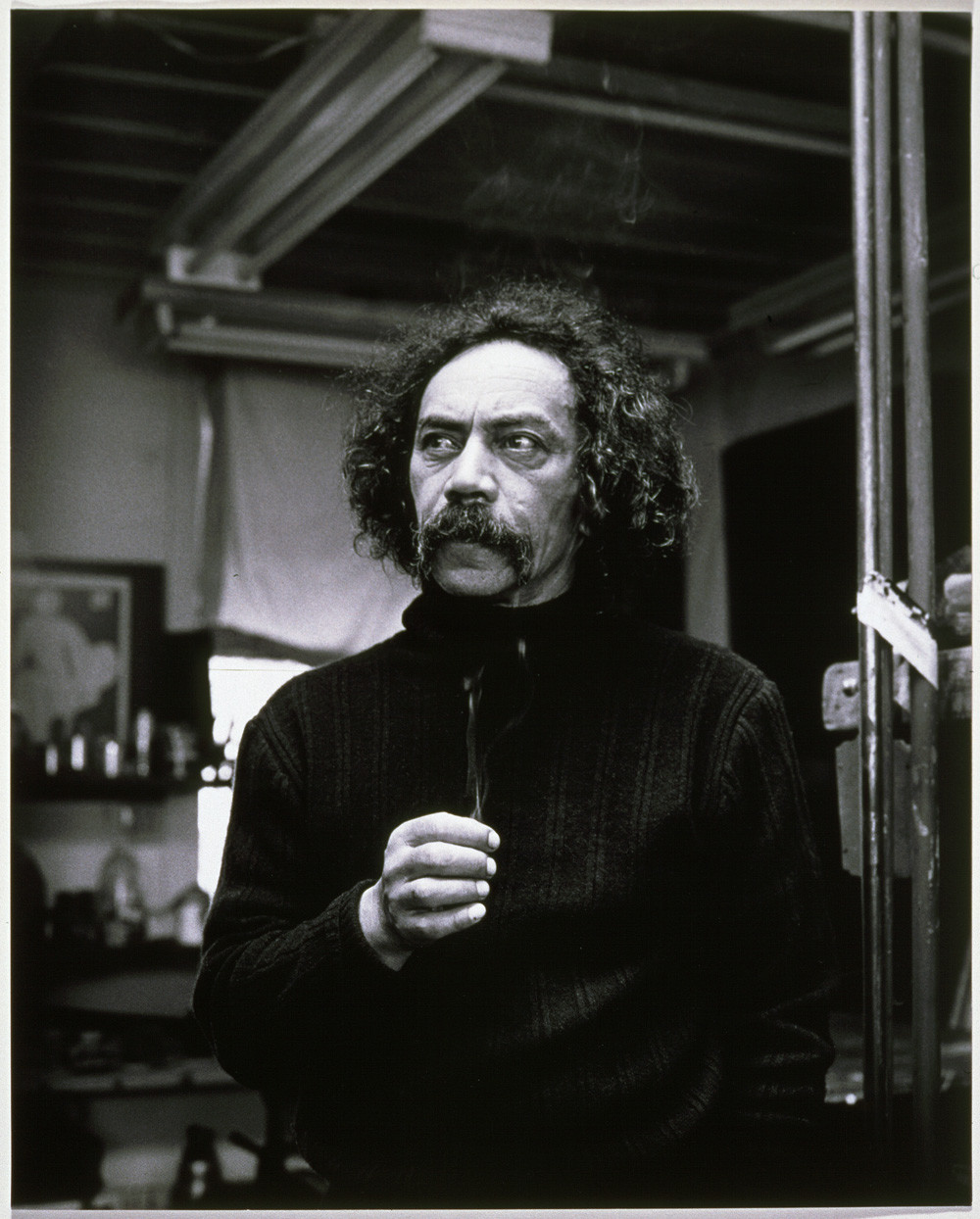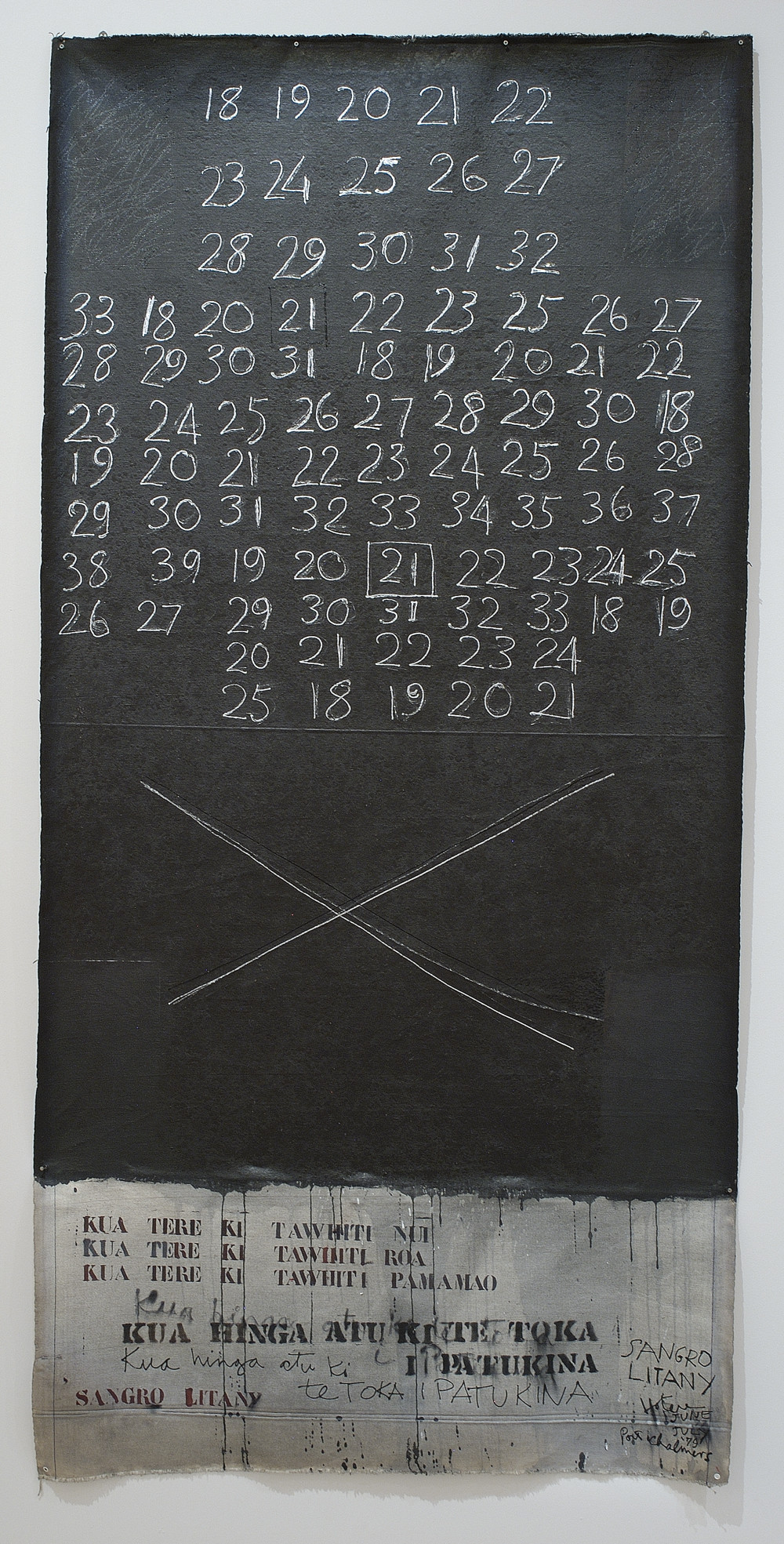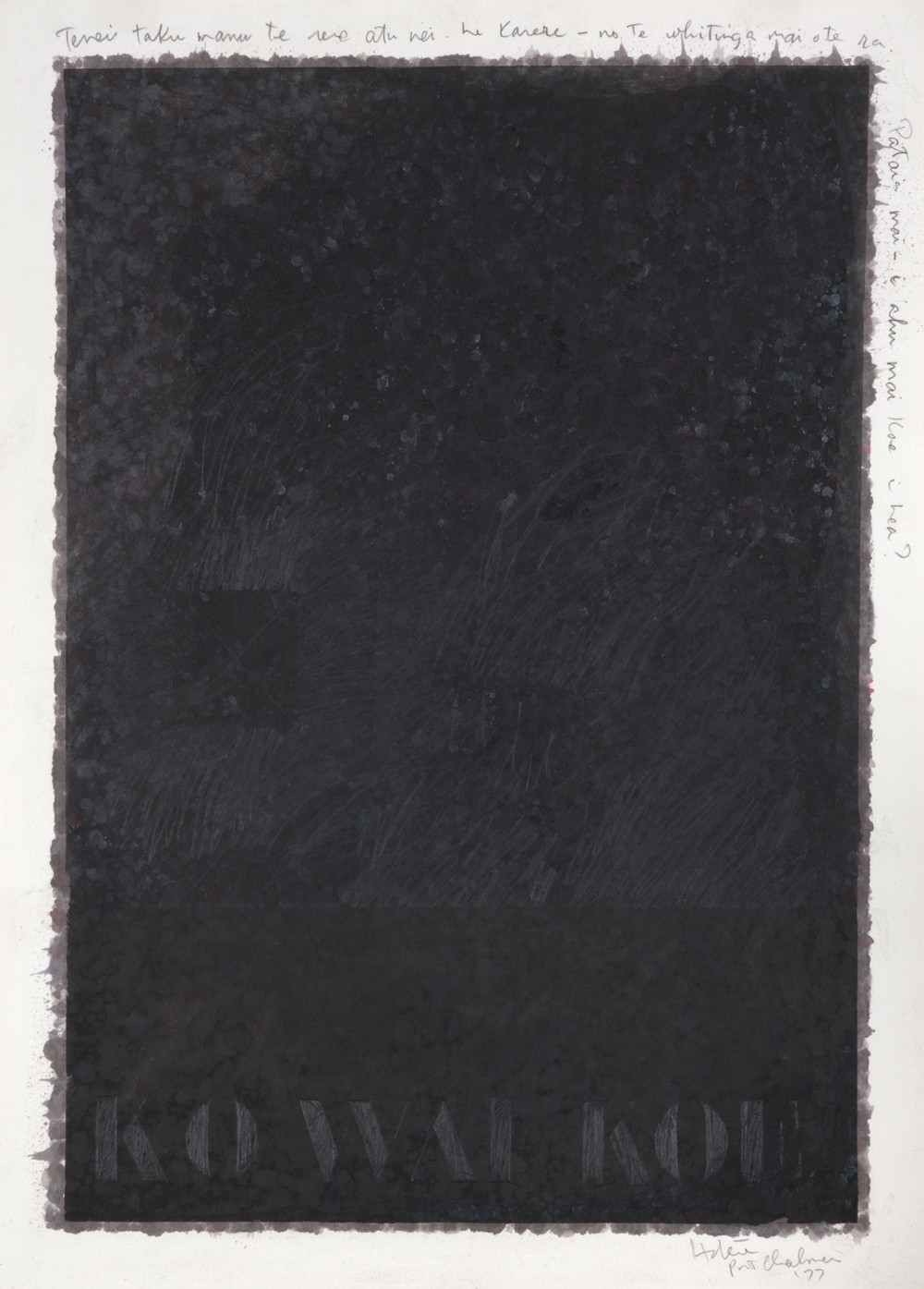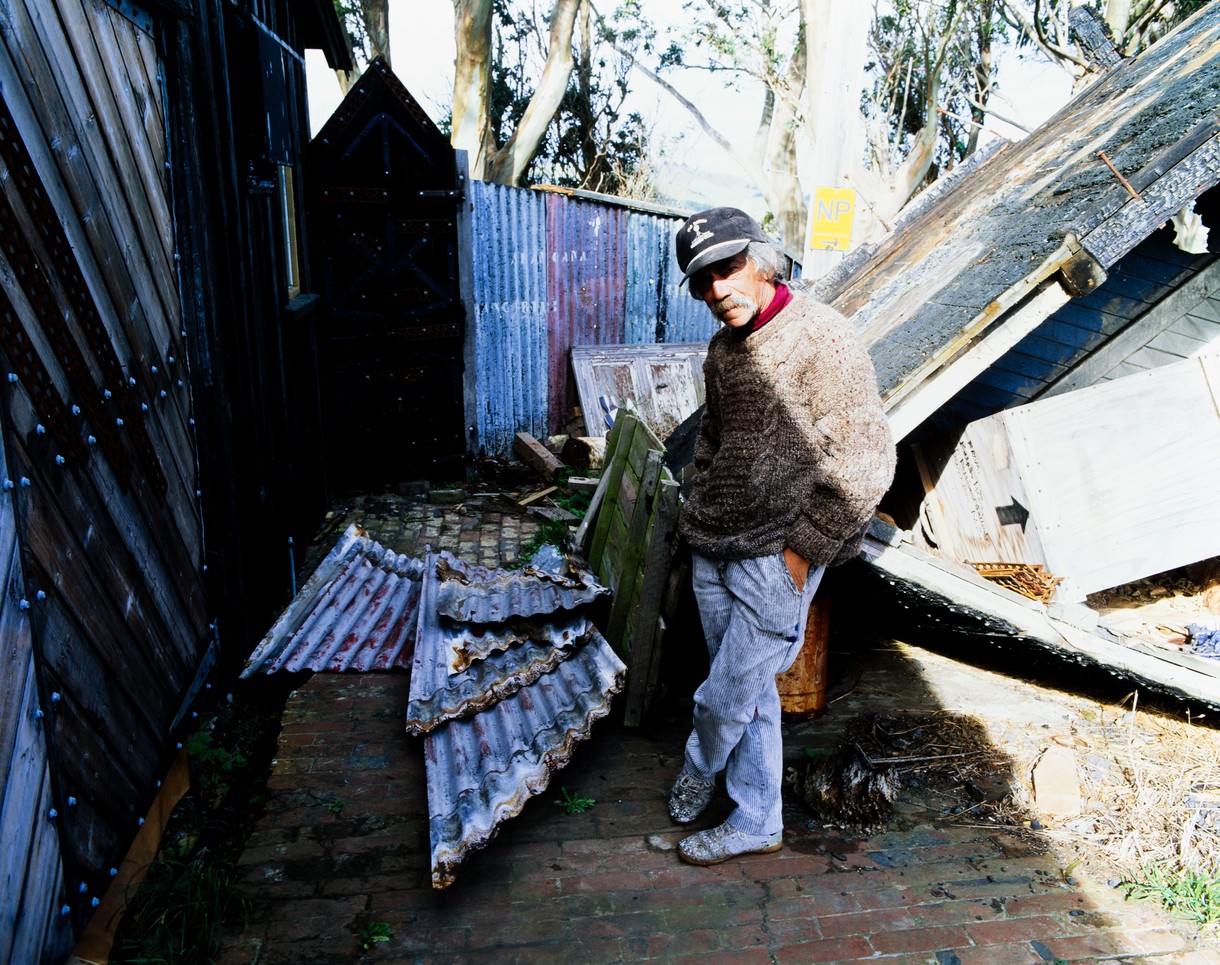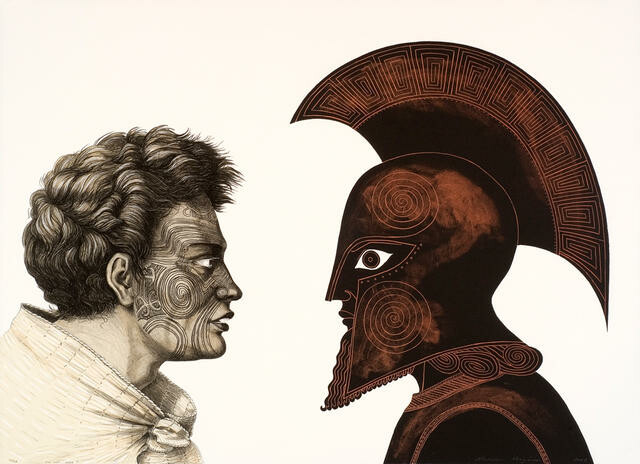B.
Black Union Jack
Behind the scenes
With the death of Nelson Mandela, the history of the anti-apartheid struggle is being re-examined, including the protest movement that emerged here in New Zealand.
Many New Zealand artists lent their voices and images to that cause, as they have to a range of other campaigns over the years, from condemning nuclear testing in the Pacific and protecting the natural environment to opposing military intervention in the Middle East.

Ralph Hotere Black Union Jack 1984. Etching. Purchased, 1985. Reproduced courtesy of Ralph Hotere
Perhaps the artist whose work is most closely associated with the anti-apartheid movement here is Ralph Hotere. This Black Union Jack etching, made at Ilam in 1984, was one of several works Hotere made referring to New Zealand's controversial ties with the South African government through rugby. This one is ironically dedicated, in Hotere's customary inverted scrawl, 'To the people of SOWETO with love from the NZRFU [New Zealand Rugby Football Union]'. Hotere had earlier used the union jack motif in a painting on canvas in 1979, which he described as a 'banner to decorate the HQ of the NZRFU'.
In another etching in our collection, this one from 1988, Hotere fires off a single, incendiary word: BIKO - a reference to the South African anti-apartheid activist Stephen Biko who founded the Black Consciousness Movement. Arrested countless times and held for several months without charges, Biko was beaten to death in custody in 1977. His name and image became powerful symbols in the fight for equality. Before his death, he founded the Zimele Trust Fund, which provided aid to political prisoners and their families, including Nelson Mandela.

Ralph Hotere Biko 1988. Etching. Reproduced courtesy of Ralph Hotere
